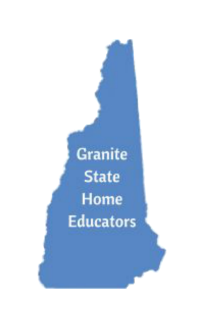In all the discussions, testimonies, and articles about the proposed school choice ESA, the opposition refuses to comment on the educational effects on children. Where are the children in their comments? Why don’t they focus on the impact it has on children and the trajectory for their lives?
For them it is all about the money. After hearing many testify at the House Education Committee’s public hearing on Senate Bill 193, it is clear they see children as having dollar signs on their foreheads. They only see children as vehicles for money to go in or out of their districts. It has nothing to do with meeting children’s educational needs or providing a quality education that parents seek for their children.
Supporters of the school choice Education Savings Account (ESA) believe it is all about the children and giving them the best opportunity for an education that fits. Children have one chance at a Kindergarten through 12th grade education. While reforms may attempt improvements on a system-wide basis, individual children don’t have time to see if these experiments will work for them. They need alternatives now, not just wishful thinking of improvements to come.
Who Makes the Decisions?
Opponents believe public school professionals are the only people qualified and equipped to make decisions impacting children’s education. We heard several district superintendents and educational association representatives disparage parents, saying they are incapable of understanding their children’s needs. Why would they say such a thing? Could they be thinking of the children when they make these claims? Or are they guarding their near-monopoly of education and funding?
We believe parents are the first and primary educators of their children. They are closest to the children and are best suited to make these critical decisions. Yes, they may seek out guidance and support from professionals, but parents have a vested interest in providing good options for their children.
A Customized Education
School choice, and the ESA defined in Senate Bill 193, allows for a customized education. Children are not the same and it is illogical to think that education can be one-size-fits-all. While public school may be a good option for many children, it cannot possibly meet the needs of all. For those children, they need alternatives and the school choice ESA empowers parents with the means to obtain educational options such as tutoring services, support materials, online classes, private school tuition, therapies from licensed or certified providers, and more.
This benefits the most vulnerable in our communities — those of lower-economics means and children with special needs. New Hampshire already offers tax-credit scholarships for K-12 students based on family income levels. In this program 10% of the scholarship recipients are students with special needs. Although the scholarship helps some children, many more are trapped in their zip code assigned schools; the ESA would free them to access resources they otherwise cannot obtain.
Accountability to Parents
Accountability should be to parents, not politicians. Our public school system and many legislators claim testing is the best and primary tool to determine an “adequate education.” But children are more than test scores. Parents look beyond test results to judge if a school is meeting their children’s needs. They consider many factors such as the school’s reputation, course offerings, school discipline, moral values, teacher-parents relations, class size, college acceptance rates, and more. These have a major impact on the overall educational fit and lead to better outcomes. School choice and ESA programs enable more parents, not just the wealthy, to hold their children’s schools to these expectations. This is a win-win for the students and society.
Make a Difference
The House Education Committee will soon vote on Senate Bill 193. Urge them to support children and the school choice ESA. Brief phone calls are most effective, but personalized emails directed to individuals are also helpful; mention if you are a constituent. To contact the entire House Education Committee, you may send one email to HouseEducationCommittee@leg.state.nh.us. Below is a list of the House Education Committee members’ emails for an easy copy/paste.
2021 Home Education Enrollment
| Participating Agencies | 2021 | 2020 | 2019 | 2018 | 2017 |
| Public Districts | 3,842 | 5,809 | 2,952 | 3,005 | 2,865 |
| NH DOE | 105 | 84 | 3 | 12 | 10 |
| Private Schools | 238 | 217 | 0 | 235 | 0 |
| TOTAL | 4,185 | 6,110 | 2,955 | 3,252 | 2,875 |
ladd.nhhouse@charter.net
terry.wolf@leg.state.nh.us
beshaw3@comcast.net
glenn.cordelli@leg.state.nh.us
bob.elliott@leg.state.nh.us
carolyn.halstead@leg.state.nh.us
Mel.Myler@leg.state.nh.us
patricia.cornell@leg.state.nh.us
jimgreniersullivan7@gmail.com
josh.moore@leg.state.nh.us
Mary.Heath@leg.state.nh.us
David.Doherty@leg.state.nh.us
joe@joepitre.com
patchessul@comcast.net
Wayne.Burton@leg.state.nh.us
linda.tanner@leg.state.nh.us
Once it passes the full House, Senate Bill 193 will advance to the House Finance Committee. Let them hear from you, too! To contact the entire House Finance Committee, you may send one email to HouseFinanceCommittee@leg.state.nh.us. Below is the list of the members’ contact information as well as a simplified email list for an easy copy/paste.
[table “7” not found /]rep03281@aol.com
lynne.ober@comcast.net
kweyler@aol.com
timothy.twombly@leg.state.nh.us
tracy.emerick@leg.state.nh.us
erin.hennessey@leg.state.nh.us
Maryjane.Wallner@leg.state.nh.us
msmithpen@aol.com
Tom.Buco@leg.state.nh.us
bobwalsh2@comcast.net
karen.umberger@leg.state.nh.us
frank.byron@leg.state.nh.us
peterjspanos@gmail.com
Sharon.Nordgren@leg.state.nh.us
Cindy.Rosenwald@leg.state.nh.us
William.Hatch@leg.state.nh.us
Patricia.Lovejoy@leg.state.nh.us
betsy.mckinney@leg.state.nh.us
bedrep7@gmail.com
Rep.Bates@live.com
nhlpm@myfairpoint.net
Daniel.Eaton@leg.state.nh.us
prleishman@aol.com
Katherine.Rogers@leg.state.nh.us

